Buying Guide for the Best TV Projector For Ceiling Mount
Choosing the right TV projector for ceiling mount can significantly enhance your home entertainment experience. It's important to consider various specifications to ensure you get a projector that meets your needs and fits well in your space. Here are some key specs to consider and how to navigate them.ResolutionResolution refers to the number of pixels that make up the image on the screen. Higher resolution means more detail and clarity. Common resolutions include 720p (HD), 1080p (Full HD), and 4K (Ultra HD). If you plan to watch a lot of high-definition content or use the projector for gaming, a higher resolution like 1080p or 4K is ideal. For casual viewing or smaller screens, 720p might be sufficient.
BrightnessBrightness is measured in lumens and indicates how bright the projector's image will be. This is crucial for ensuring the image is visible in different lighting conditions. For dark rooms, 1500-2500 lumens may be sufficient. For rooms with some ambient light, look for 2500-4000 lumens. For very bright rooms or outdoor use, 4000+ lumens is recommended. Consider your room's lighting when choosing the brightness level.
Contrast RatioContrast ratio measures the difference between the darkest and brightest parts of the image. A higher contrast ratio means deeper blacks and more vibrant colors. Ratios like 1000:1 are on the lower end, while 100,000:1 or higher are on the upper end. If you want a more cinematic experience with rich colors and deep blacks, aim for a higher contrast ratio.
Throw DistanceThrow distance is the distance between the projector and the screen. It determines how large the image will be at a given distance. Short throw projectors can create a large image from a short distance, making them ideal for smaller rooms. Long throw projectors require more space but can produce larger images. Measure your room and decide where you will mount the projector to determine the appropriate throw distance.
Keystone CorrectionKeystone correction helps adjust the image to be perfectly rectangular even if the projector is not perfectly aligned with the screen. This is especially important for ceiling mounts where perfect alignment can be challenging. Look for projectors with both vertical and horizontal keystone correction for maximum flexibility in placement.
Lens ShiftLens shift allows you to move the image up, down, left, or right without moving the projector. This feature is useful for ceiling mounts as it provides more flexibility in positioning the projector. If your mounting options are limited, a projector with lens shift can help you achieve the perfect image alignment.
ConnectivityConnectivity options determine what devices you can connect to your projector. Common inputs include HDMI, USB, and VGA. Ensure the projector has enough ports for your needs, such as connecting a Blu-ray player, gaming console, or streaming device. Wireless connectivity options like Wi-Fi and Bluetooth can also be convenient for streaming content without cables.
Lamp LifeLamp life indicates how long the projector's lamp will last before needing replacement. It is usually measured in hours. Longer lamp life means less frequent replacements and lower maintenance costs. Typical lamp life ranges from 2000 to 5000 hours, with some models offering up to 10,000 hours or more. Consider how often you will use the projector to determine the importance of lamp life.


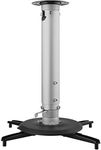
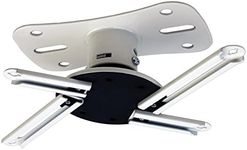

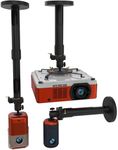

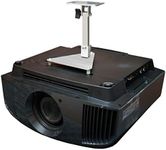
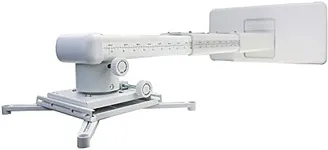

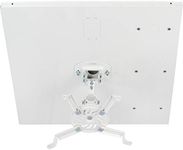
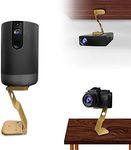

![Mount-IT! Projector Ceiling Mount [30 lbs Capacity] Universal Bracket | 360 Full Motion with Tilt and Swivel Rotate | Adjustable Pole Height from 21-34.5 Inches, Extendable Arms (White | Long)](https://images-proxy.bestreviews.guide/VjlEZk9wdrhjeCRPO76OtA5Zegk=/0x150/https://m.media-amazon.com/images/I/3144pQTCOCL._AC_CX679_.jpg)






